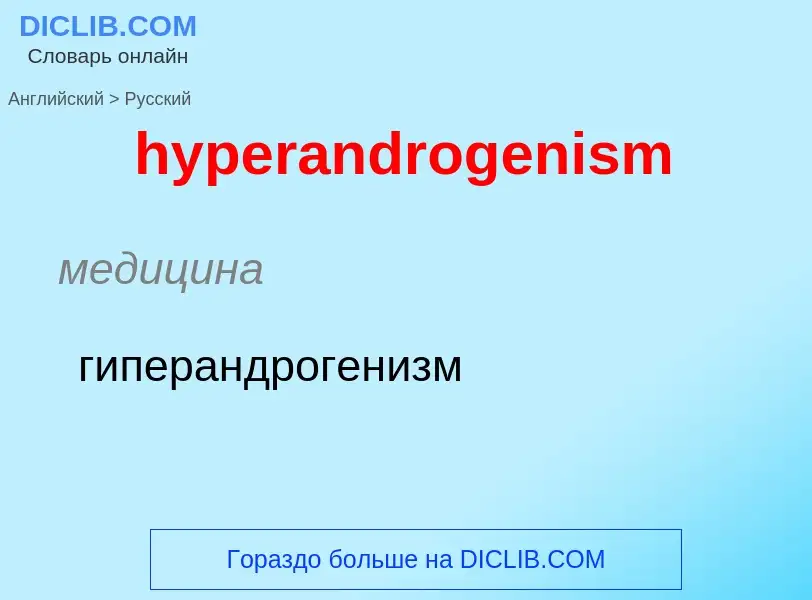Traducción y análisis de palabras por inteligencia artificial
En esta página puede obtener un análisis detallado de una palabra o frase, producido utilizando la mejor tecnología de inteligencia artificial hasta la fecha:
- cómo se usa la palabra
- frecuencia de uso
- se utiliza con más frecuencia en el habla oral o escrita
- opciones de traducción
- ejemplos de uso (varias frases con traducción)
- etimología
hyperandrogenism - traducción al ruso
медицина
гиперандрогенизм
медицина
аплазия влагалища
медицина
поликистоз яичника
поликистозный яичник
Wikipedia
Hyperandrogenism is a medical condition characterized by high levels of androgens. It is more common in women than men. Symptoms of hyperandrogenism may include acne, seborrhea (inflamed skin), hair loss on the scalp, increased body or facial hair, and infrequent or absent menstruation. Complications may include high blood cholesterol and diabetes. It occurs in approximately 5% of women of reproductive age.
Polycystic ovary syndrome accounts for about 70% of hyperandrogenism cases. Other causes include adrenal hyperplasia, hirsutism, insulin resistance, hyperprolactinemia, Cushing's disease, certain types of cancers, and certain medications. Diagnosis often involves blood tests for testosterone, 17-hydroxyprogesterone, and prolactin, as well as a pelvic ultrasound.
Treatment depends on the underlying cause. Symptoms of hyperandrogenism can be treated with birth control pills or antiandrogens, such as cyproterone acetate or spironolactone. Other palliative measures may include hair removal techniques.
The earliest known description of the condition is attributed to Hippocrates.
In 2011, the International Association of Athletics Federations (now World Athletics) and IOC (International Olympic Committee) released statements restricting the eligibility of female athletes with high testosterone, whether through hyperandrogenism or as a result of a difference in sex development (DSD). These regulations were referred to by both bodies as hyperandrogenism regulations and have led to athletes with DSDs being described as having hyperandrogenism. They were revised in 2019 to focus more specifically on DSDs.

![[[Caster Semenya]], a genetically XY female athlete with [[5-alpha reductase deficiency]]. [[Caster Semenya]], a genetically XY female athlete with [[5-alpha reductase deficiency]].](https://commons.wikimedia.org/wiki/Special:FilePath/Caster Semenya 2010 Memorial Van Damme.jpg?width=200)
![A woman with [[hirsutism]] from increased androgen exposure A woman with [[hirsutism]] from increased androgen exposure](https://commons.wikimedia.org/wiki/Special:FilePath/CushingsBody.jpg?width=200)




